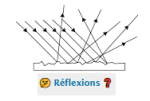Le Liquide cérébrospinal

Par Mary Ann Clark, Texas Wesleyan University, Matthew Douglas, Grand Rapids Community College, Jung Choi, Georgia Institute of Technology
Biology 2e, OpenStax, Rice University (https://openstax.org/details/books/biology-2e), CC BY 4.0, https://commons.wikimedia.org/w/index.php?curid=138159608
Nous vous proposons 4 articles sur le LCR
L. Sakka, G. Coll, J. Chazal, Anatomie et physiologie du liquide cérébrospinal
L. Sakka, G. Coll, J. Chazal, Anatomy and physiology of cerebrospinal fluid. European Annals of Otorhinolaryngology, Head and Neck Diseases, Volume 128, Issue 6, December 2011, Pages 309-316
www.sciencedirect.com/science/article/pii/S1879729611001013
Extrait du résumé
« Le liquide cérébrospinal (LCS) est contenu dans les ventricules du cerveau et les espaces subarachnoïdiens intracrâniens et intrarachidiens. Le volume de LCS est en moyenne de 150 mL, dont 25 mL dans les ventricules et 125 mL dans les espaces subarachnoïdiens. La sécrétion par les plexus choroïdes, largement prédominante, n’est pas exclusive. Le liquide interstitiel, l’épendyme et les capillaires pourraient jouer un rôle dont l’importance est mal connue. La circulation des sites de sécrétion vers les sites de résorption dépend largement de l’ondée systolique. D’autres phénomènes interviennent : les ondes respiratoires, la position du sujet, la pression veineuse jugulaire interne et l’effort physique ».
- Résumé en français, article paru dans les "Annales françaises d’Oto-rhino-laryngologie et de Pathologie Cervico-faciale"
www.sciencedirect.com/science/article/pii/S1879726111001999
D. Oreškovi, M. Klaricab,
The formation of cerebrospinal fluid :
Nearly a hundred years of interpretations and misinterpretations
Abstract
The first scientific and experimental approaches to the study of cerebrospinal fluid (CSF) formation began almost a hundred years ago. Despite researchers being interested for so long, some aspects of CSF formation are still insufficiently understood. Today it is generally believed that CSF formation is an active energy consuming metabolic process which occurs mainly in brain ventricles, in choroid plexuses. CSF formation, together with CSF absorption and circulation, represents the so-called classic hypothesis of CSF hydrodynamics. In spite of the general acceptance of this hypothesis, there is a considerable series of experimental results that do not support the idea of the active nature of CSF formation and the idea that choroid plexuses inside the brain ventricles are the main places of formation. The main goal of this review is to summarize the present understanding of CSF formation and compare this understanding to contradictory experimental results that have been obtained so far. And finally, to try to offer a physiological explanation by which these contradictions could be avoided. We therefore analyzed the main methods that study CSF formation, which enabled such an understanding, and presented their shortcomings, which could also be a reason for the erroneous interpretation of the obtained results. A recent method of direct aqueductal determination of CSF formation is shown in more detail. On the one hand, it provides the possibility of direct insight into CSF formation, and on the other, it clearly indicates that there is no net CSF formation inside the brain ventricles. These results are contradictory to the classic hypothesis and, together with other mentioned contradictory results, strongly support a recently proposed new working hypothesis on the hydrodynamics of CSF. According to this new working hypothesis, CSF is permanently produced and absorbed in the whole CSF system as a consequence of filtration and reabsorption of water volume through the capillary walls into the surrounding brain tissue. The CSF exchange between the entire CSF system and the surrounding tissue depends on (patho)physiological conditions that predominate within those compartments.
- Source de l’article
www.sciencedirect.com/science/article/pii/S0165017310000494
K. Bechter
The peripheral cerebrospinal fluid outflow pathway – physiology and pathophysiology of CSF recirculation
A review and hypothesis
Clinic for Psychiatry and Psychotherapy II, Ulm University, Germany
Neurology, Psychiatry and Brain Research Volume 17, Issue 3 , Pages 51-66, September 2011
Abstract
An anatomical connection from subarachnoid spaces along nerves into peripheral tissues represents an important route for CNS antigens release, termed here peripheral cerebrospinal fluid outflow pathway (PCOP), is assumed analogous to mammals in humans : CSF leaves the subarachnoid spaces along nerves and joins respective interstitial tissue fluids, then the lymph then blood ; in detail, flowing from the subfrontal subarachnoid spaces through the cribriform plate near olfactory nerves to nasal submucosa to the cervical lymph system, along cranial nerves and spinal nerves into respective peripheral tissues. Microanatomic details and relative shares of outflow volumes at various parts of the PCOP as compared to CSF reabsorption volumes into the venous system remain to be determined.
Beyond, CSF functions as a third signaling system involving all CNS structures preferably surfaces, including spinal cord and nerve roots. But CSF may interact also with all cranial and peripheral nerves via the PCOP, and related peripheral tissues connected by nerves, e.g. subcutaneous tissues, muscles or neuronal ganglia, and even, a special case, the eye. PCOP associated pathomechanisms might arise with any abnormal pathogenic CSF contents including solutes and cells in various diseases, relevant especially in acute neuroinflammation, possibly in systemic inflammation, likely in chronic neuroinflammation and possibly in low level neuroinflammation. The latter may include subgroups of psychiatric disorders. PCOP associated pathomechanisms might explain for example the surprising muscle involvement in depression and schizophrenia, or diffuse pain or dysautonomia. PCOP associated pathomechanisms should generally relate to PCOP anatomy and the CSF outflow physiology respectively pathophysiology.
- Source de l’article
www.sciencedirect.com/science/article/abs/pii/S0941950011000236
Roberta Di Terlizzi , Simon Platt
The function, composition and analysis of cerebrospinal fluid in companion animals
Department of Diagnostic Medicine/Pathobiology, College of Veterinary Medicine, Kansas State University, KS 66506-5606, USA
Neurology Unit, Animal Health Trust, Newmarket CB8 7UU, United Kingdom
Part I – Function and composition
Abstract
Cerebrospinal fluid (CSF) is a clear, colourless ultrafiltrate of plasma with low protein content and few cells. The CSF is mainly produced by the choroid plexus, but also by the ependymal lining cells of the brain’s ventricular system. CSF flows through the ventricular system and then into the subarachnoid space and it is subsequently absorbed through the subarachnoid villi into the venous system. CSF has several functions in the nervous system. It protects the brain during blood pressure fluctuations, regulates the chemical environment of the central nervous system and it is a vehicle for intracerebral transport. This two-part article reviews CSF function, physiology, analytical techniques and interpretations in disease states of companion animals. This first part will address the function and composition of CSF in companion animals.
- Source de l’article
Veterinary journal London England 1997
Part II - analysis.
Abstract
Accurate analysis of cerebrospinal fluid (CSF) provides a wide range of information about the neurological health of the patient. CSF can be withdrawn from either of two cisterns in dogs and cats using relatively safe techniques. Once CSF has been collected it must be analysed immediately and methodically. Evaluation should consist of macroscopic, quantitative and microscopic analyses. As part of a quantitative analysis, cell counts and infectious disease testing are the most important and potentially sensitive indicators of disease. Although certain pathologies can be described, microscopic analysis will rarely be specific for any disease, emphasising the adjunctive nature of this diagnostic modality.
- Source de l’article
The Veterinary Journal Volume 180, Issue 1, April 2009, Pages 15–32










